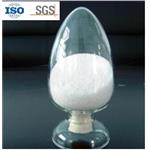What is Vismodegib
Aug 1,2024
Description
Vismodegib (GDC-0449; Vismo) is a first-in-class, orally administered Hedgehog pathway inhibitor approved in 2012. It is currently approved for treating advanced basal-cell carcinoma, but other indications are being explored. Vismo has a very slow clearance from the body that allows for prolonged exposure, which is beneficial for sustaining the mechanism of action.
![2-Chloro-N-[4-chloro-3-(2-pyridinyl)phenyl]-4-(methylsulfonyl)benzamide 2-Chloro-N-[4-chloro-3-(2-pyridinyl)phenyl]-4-(methylsulfonyl)benzamide](/NewsImg/2024-08-01/6385811859748269978866362.png)
Mechanism of Action
Vismodegib inhibits the Hedgehog signaling pathway. The Hedgehog pathway plays a crucial role during embryogenic development but has limited activity in most adult tissues, except hair, skin and stem cells. In more than 90% of BCC, the Hedgehog signaling pathway is abnormally upregulated. Mutations in key receptor proteins such as Patched (PTCH) and Smoothened (SMO) result in abnormal transcription of target genes that regulate basal cell growth and proliferation. Vismodegib acts as an SMO antagonist to prevent the activation of GLI1 and GLI2 transcription factor, blocking the signaling cascade.
Absorption
Vismodegib appears to have a nonlinear pharmacokinetic profile following daily oral dosing, and a steady state is achieved within 7 days. A dose increase from 150 mg to 540 mg (1 to 3.6 times the recommended dose) does not increase steady-state plasma concentrations. With a once-daily dose of 150 mg, the average plasma concentration of vismodegib at steady state is approximately 23 µM. The absolute bioavailability of a single dose of vismodegib is 31.8%. Absorption is saturable and is not affected by food.
Metabolism
Vismodegib is mainly metabolized by CYP2C9 and CYP3A4 in the liver; however, more than 98% of total systemic vismodegib is not metabolized. Metabolic pathways of vismodegib in humans include oxidation, glucuronidation, and pyridine ring cleavage. The two most abundant oxidative metabolites recovered in feces are produced in vitro by recombinant CYP2C9 and CYP3A4/5.
Side effects
The most common adverse reactions (having an incidence of 10% or more) associated with vismodegib in clinical trials are muscle spasms; hair loss due to drug-induced alopecia; altered taste sensation; weight loss; fatigue; nausea; diarrhoea; decreased appetite.
The following adverse drug reactions have been identified during post-approval use of vismodegib based on case reports and investigator-initiated studies: premature fusion of epiphyses (growth plates) and precocious puberty.
- Related articles
- Related Qustion
Supplementation with pyridoxal 5'-phosphate monohydrate can synthesize neurotransmitters such as dopamine and serotonin, maintaining a healthy nervous system.....
Nov 4,2025Biochemical EngineeringIndigo is a pigment extracted from the leaves of indigo-bearing plants and is the oldest natural source of blue dye in the world. This article will introduce its synthesis method.....
Aug 1,2024Dyes and PigmentsVismodegib
879085-55-9You may like
- Vismodegib
-

- $38.00 / 5mg
- 2026-01-09
- CAS:879085-55-9
- Min. Order:
- Purity: 99.99%
- Supply Ability: 10g
- Vismodegib
-

- $0.00 / 25kg
- 2025-12-01
- CAS:879085-55-9
- Min. Order: 1kg
- Purity: 99%
- Supply Ability: 10000KGS
- Vismodegib
-

- $0.00 / 1g
- 2025-09-11
- CAS:879085-55-9
- Min. Order: 1g
- Purity: More Than 99%
- Supply Ability: 100kg/Month






